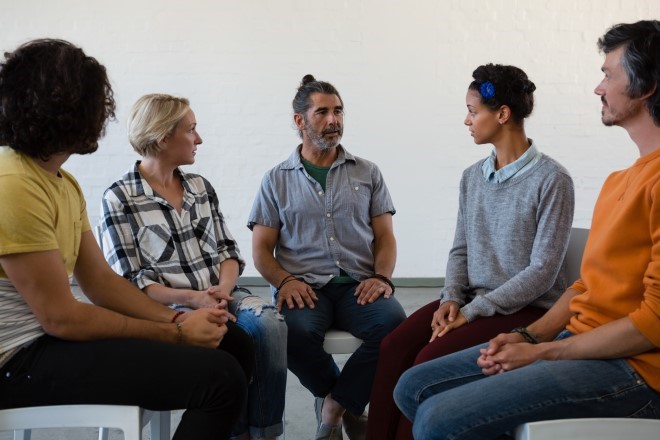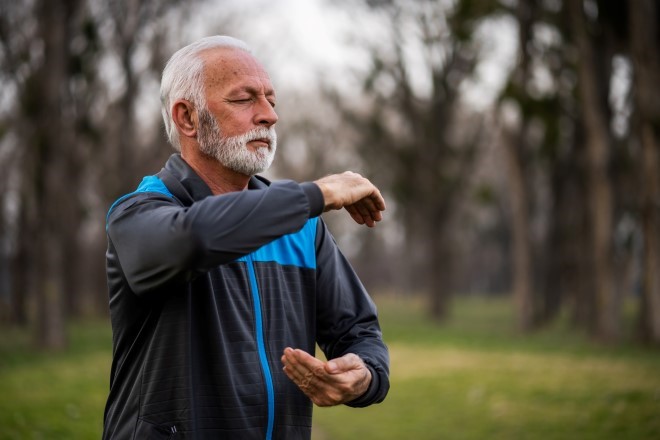
Although people tend to think about health conditions like pain and addiction as separate problems, that’s often not how real life works.
Thousands of Americans with opioid use disorder visit treatment clinics to get medications for opioid use disorder, and up to half of them have co-occurring pain conditions. At the same time, 25 to 50 million Americans live with daily chronic pain, and many have opioid use disorder or use opioids in a harmful way that puts them at risk for addiction.
The Integrative Management of chronic Pain and OUD for Whole Recovery (IMPOWR) research program is the first of its kind to support real-world, patient-centered research targeting both chronic pain and harmful opioid use at the same time. The NIH Helping to End Addiction Long-term® Initiative, or HEAL, launched the program because people who have both conditions often fall through the cracks because of fragmented healthcare – a roundabout way of saying they get poor care or no care at all.
IMPOWR Research Studies
- Pain self-management for people with opioid use disorder (primary care)
- Acceptance commitment therapy + Mindfulness-based relapse prevention (opioid treatment programs)
- Onsite yoga or physical therapy (opioid treatment programs)
- Flexible buprenorphine dosing (office-based opioid treatment programs)
- Buprenorphine microdosing (hospitals)
- Pharmacist-physician collaborative care (VA primary care)
- Multimodal chronic pain care (opioid treatment programs)
- Culturally appropriate strategies for American Indian/Alaska Native populations (primary care)
- Acceptance commitment therapy + Care management (federally qualified health centers)
Addressing Fragmented Care Through Research Innovation
The IMPOWR research program is more than just adding two separate treatments together. Therapies that are being tested must address both chronic pain and harmful opioid use, and the scientists will be looking for and measuring effects on both. They will also gather data on related factors, like trauma, which is common among people who will participate in this research.
“IMPOWR is so needed, and clinics are desperate for help,” says Katie Witkiewitz, Ph.D., of the University of New Mexico, describing her motivation to tackle both conditions together as part of this research effort. “Patients are struggling and suffering.”
Many people living with both pain and opioid use disorder do not seek help because their illnesses are highly stigmatized, making it difficult for them to receive compassionate, evidence-based care. By identifying cost-effective approaches to combine treatment for both conditions, the IMPOWR program aims to bring these evidence-based treatments into routine clinical care.
This large research effort consists of nine clinical trials, consisting of a diverse team of dozens of scientists – both experienced and those just starting out, to help build a community of researchers and providers to meet the needs of people with pain, opioid use disorder, and additional co-occurring mental health problems such as anxiety and depression.
Reflecting a critical HEAL priority, all research teams must also include people with lived experience, who bring critical insights to research teams to shape the science even before the studies begin. Each of the studies designates a community advisory board to help recruit participants and oversee the research to ensure it is acceptable to individuals living with the health conditions that are being studied.
Research in Place
Opioid treatment programs typically don’t treat pain, Witkiewitz explains, so these individuals have to go somewhere else to find pain relief. Like other IMPOWR research studies, her study is “research in place,” training addiction providers to offer an evidence-based pain treatment that also guards against relapse: returning to drug use.
Witkiewitz and her research collaborator Kevin Vowles, Ph.D., of Queens University, Belfast, in the United Kingdom, are testing a technique called acceptance and commitment therapy along with mindfulness-based relapse prevention. They recently showed in a small study of a few dozen veterans that the therapy works to help people pay attention to how they respond to pain (and recognize drug cravings), make room for negative feelings and sensations without choosing ineffective or harmful strategies to control them, and pursue personally valued activities.
Their current study will expand the approach to include 160 people who attend outpatient opioid treatment clinics. The acceptance and commitment therapy treatment, which occurs in groups of about 8 to 10 people, will be taught to addiction treatment specialists in a “train the trainer” fashion.
“We’re meeting people where they are – at the place they’re already receiving addiction treatment, from the providers they know and trust,” she explains.
Acceptance and commitment therapy is different from other behavioral treatments for pain because it helps people recognize symptoms but accept the fact that their pain is not going away. The approach is very person-specific, since everyone is different in terms of what drives triggers, what other health conditions they might have, what they enjoy – and how to develop a plan that will work for them to live a full life despite all the things that cause suffering.
“Pain is physical pain and emotional pain – that includes depression, anxiety, and reactions to trauma, all of the things that we experience as humans. There’s nothing inherently wrong with you for having these symptoms,” Witkiewitz explains.
“We Have Better Options”
Will Becker, M.D., of Yale University is conducting an IMPOWR research study targeted to people on long-term opioid therapy for pain who are at risk for opioid addiction due to harmful use.
“These patients are floundering in many cases,” he says. “Therapy isn’t really working for them, and they’re stuck.”
The patients participating in Becker’s study will be cared for through a combination approach that pairs a physician with a pharmacist that tailors treatment options for individual patients.
“Patients were really engaged,” Becker says of his previous experience with the approach, known as collaborative care. “They like getting individual attention from a pharmacist – having someone who knows you and is working directly with you.”
Previous research with the model showed it was effective in helping individuals with chronic pain safely manage their opioid use, including the ability to prescribe buprenorphine for risky use, if necessary.
Becker’s new IMPOWR study will offer these individuals other options, including an interactive, voice response-based cognitive behavioral therapy that teaches pain coping skills. It has been shown in many separate studies to be effective, on its own, for people with chronic pain. Other HEAL research is studying how re-training the brain through pain coping skills is an effective treatment for chronic pain, but this approach has not been tested in individuals with opioid use disorder.
Becker and his team continue to focus on the positive with patients rather than past problems with either pain or opioid use.
“We started these pain meds to help your function improve, and your function is getting worse,” Becker tells his patients. “We have better options.”

Tailoring Buprenorphine Doses
There is another chronic pain treatment option in addition to effective behavioral treatments like pain coping skills and complementary approaches such as yoga, acupuncture, tai chi, physical therapy, and mindfulness. Buprenorphine, an opioid itself, stabilizes withdrawal symptoms and soothes cravings in people who have both chronic pain and opioid use disorder, but it is underused.
The standard buprenorphine treatment approach states that individuals need to be opioid-free for 24 to 48 hours before taking it. That amount of time is enough to trigger diarrhea, nausea, sweating, and other withdrawal symptoms in a person who is physically dependent on opioids and abruptly stops. Many people know about this and are afraid to take buprenorphine.
To address this issue, another IMPOWR study led by Aaron Fox, M.D., and Joanna Starrels, M.D., both of Albert Einstein College of Medicine in Bronx, New York, will give buprenorphine at a very low dose (“microdosing”) to people who have been hospitalized and are taking opioids. At the same time, opioid doses will be lowered gradually, or tapered down, to smooth the transition to buprenorphine.
That might be someone who has chronic pain and hasn’t been able to stop using heroin or fentanyl because their pain is so severe. It could be someone who ended up in the emergency department after a heroin or fentanyl overdose and was admitted to the hospital for follow-up care. Or someone with severe back pain with risky opioid use who needs better treatment.
In addition, "flexible" buprenorphine dosing is being tested by the IMPOWR research program by Jessica Merlin, M.D., Ph.D., of the University of Pittsburgh. The rationale is that some people with both chronic pain and risky opioid use may benefit from higher-than-usual doses of buprenorphine, spread out over the course of a day. Merlin is leading a study to determine if a higher-than-normal buprenorphine dose controls both pain and opioid use disorder better than the standard buprenorphine dose.
Merlin and her team will recruit participants who are receiving care either in an opioid treatment program or in primary care offices in underserved regions like rural western Pennsylvania; West Virginia; Oregon; and inner-city Baltimore, Maryland.
“These populations may be harder to reach with research,” explains Merlin, “but it’s very important to make sure that we include them so that the treatments that we’re designing work and will be used by people and providers in these often-neglected settings.”
The nine IMPOWR program clinical trials vary in number of participants that will be recruited, with most expected to be underway in summer 2022. Ultimately, adding knowledge and testing therapies in all the places where people seek care or are being treated will help address a major treatment gap for people who suffer doubly from chronic pain and harmful opioid use or opioid use disorder.
National Institute on Drug Abuse (NIDA)
Learn more about NIDA's role in the NIH HEAL Initiative.
Sign Up to Receive HEAL Research News
Subscribe to the monthly HEAL Digest to receive NIH HEAL Initiative research advances in your inbox.
 U.S. Department of Health & Human Services
U.S. Department of Health & Human Services
